Norways New Banknotes
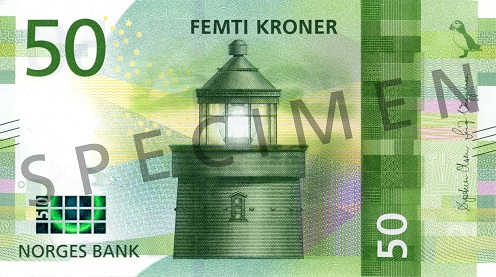
The 50-krone note features Utvær Lighthouse, Norway’s westernmost point, built in 1900 in Solund municipality. Sea-marks like this have deep roots in Norwegian history, with the first dating back to 869, when Floke Vilgerdson constructed a cairn in Sveio. By 1770, Utvær became a pilot station, passing pilotage duties through generations. Lighthouses played a vital role along the Norwegian coast, especially in the 1800s, supporting the nation’s shipping and economy. The note also features an Atlantic puffin, whose image appears in the watermark across all denominations.
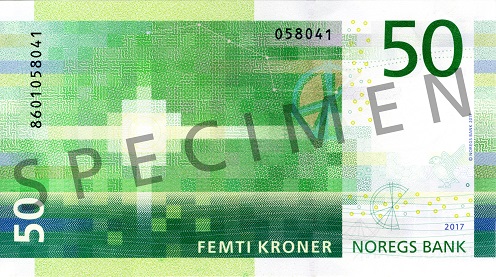
The reverse of the 50-krone note symbolizes a lighthouse light signal. Gentle winds are depicted through short rectangular shapes and soft wave patterns, while Ursa Major and a nautical chart marking lighthouse light sectors are visible. Norway’s coastline hosts over 21,000 lighthouses and sea-marks, forming a navigational network critical for trade, culture, and safe passage. While calm weather is depicted on the note, these beacons serve as steadfast guides in rough seas, ensuring secure navigation along Norway’s exposed shores.
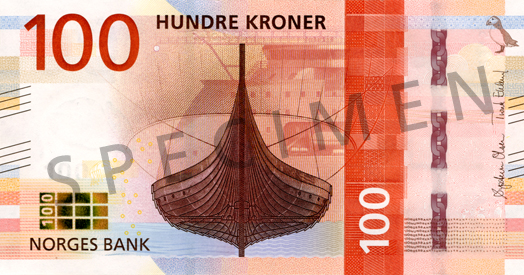
The 100-krone note features the Gokstad ship, Norway’s largest preserved Viking ship, built around 900 AD. Found in 1880, it represents Norway’s long maritime heritage. In the background, a modern Norwegian bow design, X-BOW®, highlights the ongoing importance of innovation in coastal travel. From Viking Age voyages for trade, battle, and colonization to today’s global shipping industry, Norway’s coastal survival and growth have always depended on the sea. An Atlantic puffin appears in the upper-right corner and in the watermark, as with all denominations.
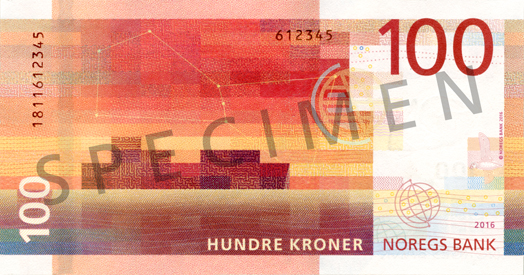
The reverse of the 100-krone note shows a cargo ship on the horizon, with a gentle breeze and cresting waves symbolized by rectangular patterns. A globe and parts of the Orion constellation are visible. Historically, shipping lanes connected the entire country to the coast, facilitating trade. Today, maritime industries remain vital to the Norwegian economy, with most imported goods still arriving by sea.
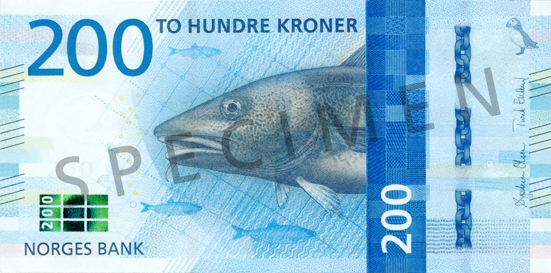
The 200-krone note features a cod, with herring and fishing net mesh in the background, symbolizing Norway’s long history with fishing. Around 11,000 years ago, the first settlers arrived seeking rich fishing waters, and by the Middle Ages, Norwegian cod became a key export. Cod and herring hold a legendary status in Norwegian culture, appearing in literature, art, and even coats of arms. The Atlantic puffin also appears in the upper-right corner and in the watermark, as on all denominations.
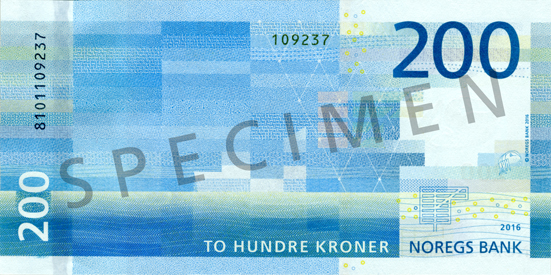
The reverse of the 200-krone note depicts a fishing boat on the horizon, with a fresh breeze and moderate waves symbolized by longer rectangular forms. Fishing nets and sea marks are also visible. Norway’s history and culture are deeply tied to the sea, with fish providing food, trade, and industry. From early fishing boats to modern trawlers and aquaculture, the sea has always sustained Norwegian life and progress.
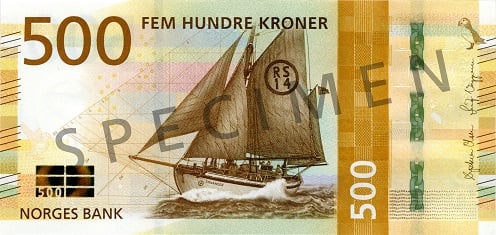
The 500-krone note features the rescue vessel RS 14 “Stavanger,” designed by Colin Archer and launched in 1901. It served 37 years with Redningsselskapet, which operates rescue vessels across Norway’s coast. The note highlights the importance of sea rescue in saving lives and providing security for those working or traveling on the ocean. As with other denominations, an Atlantic puffin and the note’s value are incorporated into the watermark.
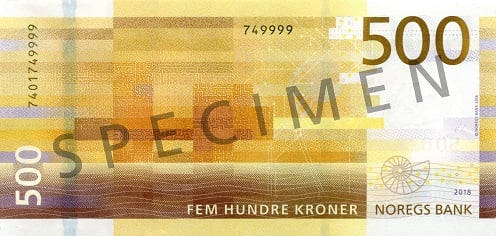
On the reverse, an oil platform appears on the horizon, with high winds and long rectangular shapes symbolizing strong waves. The design also shows the North Sea gas pipeline network and a fossil, reflecting Norway’s reliance on oil and gas for economic growth over the last 50 years. This industry, alongside traditional maritime activities, has fostered technological innovations and supported local communities.
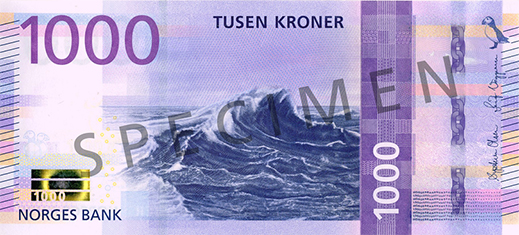
The 1000-krone note features a wave, symbolizing the sea as both a counterforce and a driving force. The sea has been central to Norway’s prosperity and global connections for over a millennium. As new industries and technologies emerge, the sea remains key to the future, though climate change poses challenges. Continued marine research is essential for sustainable development. An Atlantic puffin appears in the watermark, as on other denominations.
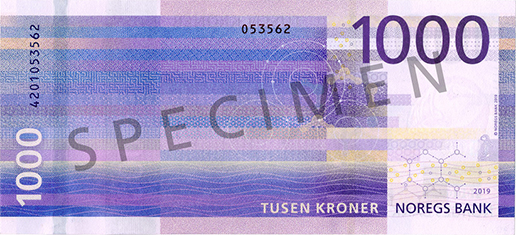
The reverse shows the open sea with strong gales and piling waves, symbolized by long rectangular shapes. Two water molecules in liquid and solid states are also depicted. Norway’s maritime heritage has long driven its economic success, with the sea providing transport, food, energy, and inspiration. The ocean remains central to Norway’s future, offering both challenges and opportunities.
Norways New Banknotes